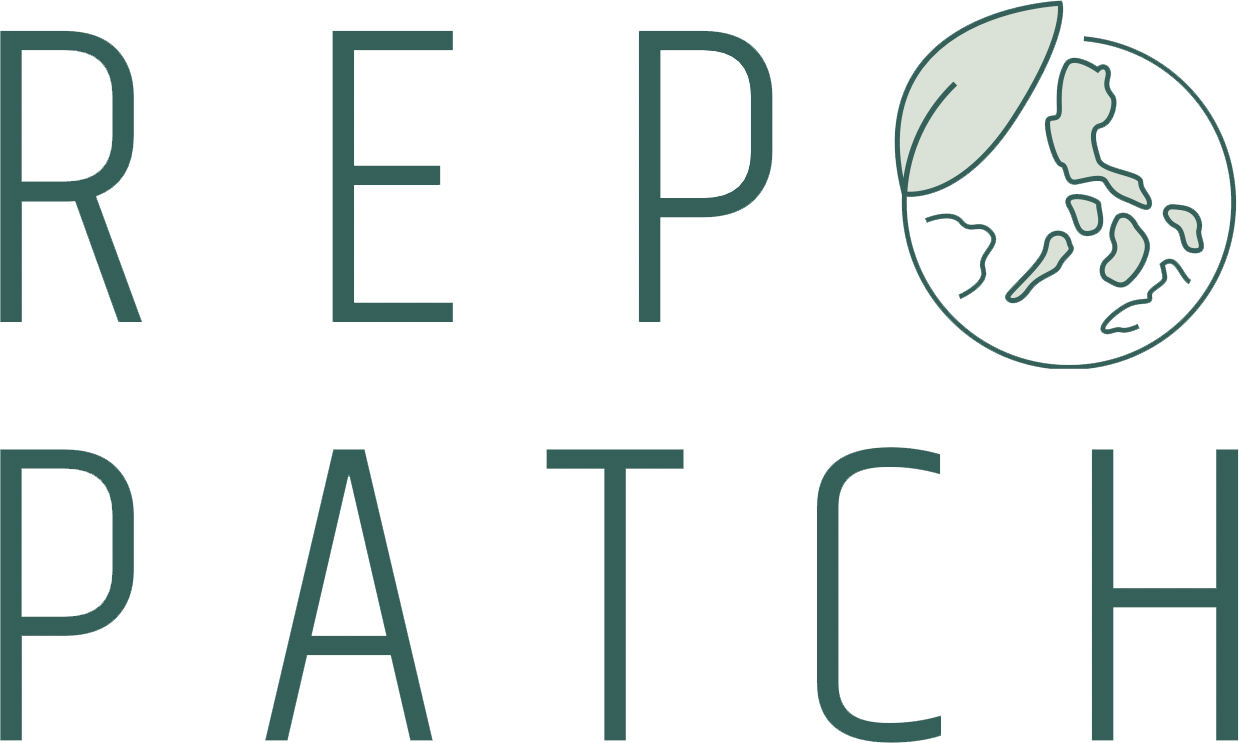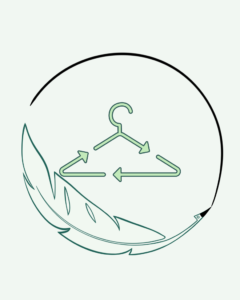Polyester is a raw material that is frequently encountered in the textile world and stands out with its durability and lightness. Polyester, a synthetic material, also stands out with its effects on the environment and human health. In this article, we will talk about the recycling and upcycling journey step by step, starting from what polyester is, examining its effects on health.
What is Polyester?
Polyester is a type of polymer. Polymers are long chain structures consisting of small molecular units (monomers) that are chemically bonded to each other. The main substance used in the structure of polyester is also a type of polymer obtained from petroleum and is known as “polyethylene terephthalate” or PET for short. This chemical structure makes polyester durable, lightweight and resistant to water.
In fact, polyester can also be considered a derivative of plastic. Polyester, a member of the plastic family, is a synthetic material produced from petroleum and is somewhat similar to the PET used in PET bottles in terms of its chemical structure. Since its molecular structure consists of long, chain polymers, it is durable and therefore widely encountered in various industries. These properties of polyester reveal the similarity of both polyester fabrics used in the textile sector and PET used in packaging with plastic.
For this reason, polyester is actually a type of plastic and its environmental impact is similar to other plastics due to its indegradability and its harm to human health.
Environmental Impacts of Polyester
Polyester’s environmental impacts are quite extensive because as a synthetic material, it becomes permanent in the environment for a long time and unfortunately, it can take hundreds of years to decompose in nature. While detailing the environmental harms of polyester, we can talk about its environmental problems at every step from the production stage to waste.
Polyester Production Process and Carbon Footprint
Polyester is produced from fossil fuels (mainly petroleum). As we know, a high amount of energy is consumed during the extraction, processing and transportation of fossil fuels, and this process increases the carbon footprint.
Since the energy used in polyester production is largely fossil fuel-based, it causes an increase in carbon dioxide (CO₂) emissions. These emissions have a negative impact on climate change.
Using recycled polyester (rPET) consumes less energy and reduces carbon emissions compared to new polyester production, but it is still not an environmentally friendly option.
The Effect of Polyester on Water Pollution and Microplastics
When polyester fabrics are washed, microfibers (very small polyester fibers, particles) are released into the water. These microfibers can reach the seas, river systems and eventually the oceans through wastewater.
Microplastics are consumed by marine organisms, thinking they are food, and in this way, they cause great harm to the marine ecosystem. They can also mix indirectly with human food and drinking water through marine organisms, thus being carried along the food chain and causing great harm to both the ecosystem and human health.
Polyester Not Decomposing in Nature and the Waste Problem
The fact that polyester does not biodegrade, i.e. does not dissolve in nature, causes it to accumulate in the environment and create permanent pollution. Polyester products thrown into landfills remain in the environment for hundreds of years if they are not properly separated and recycled.
Although synthetic fibers can be recycled, recycling processes are often limited and costly. Polyester is unlikely to be fully recycled, so much of it ends up in landfills.
Chemical Pollution and Health Threats
Chemicals used in the production process of polyester both endanger the health of those working in the relevant job and cause soil and water pollution by being released into the environment.
Chemical substances and heavy metals produced as waste during production can have negative effects on human and animal health through soil, water and air when released into the environment.
Energy and Water Consumption
Although the production of polyester requires less water than natural fabrics such as cotton, energy consumption is quite high. Especially in regions where water resources are limited, polyester production can create negative pressure on regional water and energy resources. When water used in production processes comes into contact with chemicals and is released into the environment, it can cause water pollution.
Alternative and Sustainable Solutions
Using recycled polyester (rPET) harms the environment less than new polyester production. However, rPET can also create microplastic pollution and cause microfiber release with each wash.
Biodegradable synthetic fibers and more environmentally friendly fabrics (such as Tencel, organic cotton) can be preferred over polyester. These alternatives reduce the environmental burden by leaving a lower carbon footprint.
We can also take some measures as consumers to reduce the environmental impacts of polyester. Remember, our choices govern the production of companies, not their choices. Steps such as choosing recycled products, choosing longer-lasting clothes, and using special wash bags that reduce microplastic emissions as much as possible can have a positive impact on reducing the environmental impacts of polyester. Considering the widespread use of polyester, making more conscious choices at both the producer and consumer levels is of great importance in reducing the damage to the environment.
The Health Effects of Polyester
Although polyester is a widely used synthetic material, it is a material that can have some negative effects on our health when worn. With its intensive use in the textile sector, our frequent contact with polyester products makes these effects even more important. Here are the potential health hazards of polyester:
- Skin Irritation and Allergic Reactions
Since polyester is an unnatural fabric type, it can cause irritation and itching, especially in people with sensitive skin. Polyester fabric has a low air permeability structure, which makes it difficult for the skin to breathe and can cause sweating.
Some people who come into contact with polyester fabric for a long time may experience symptoms such as allergic reactions, rashes or itching. - Respiratory Problems
Polyester fabric can sometimes emit volatile organic compounds (VOCs) due to the chemicals used in its production. These compounds are more pronounced, especially in new polyester products or low-quality production.
Inhalation of VOCs has shown headaches, eye irritation, dry throat and asthma-like symptoms in some people in case of long-term exposure. - Endocrine Disruptors and Their Effects on Hormones
It is thought that some chemicals used in polyester production may have hormone-like effects in the body. Some additives used in the plastic industry in particular (such as BPA) can disrupt the endocrine system.
Endocrine disruptors can affect the regulation of hormones and cause negative effects on reproductive health, the immune system and metabolism. - Inhalation of Artificial Fibers
During the wearing and washing of polyester fabrics, very small polyester fibers (microfibers) can spread into the environment and these fibers can enter the body through inhalation. This situation is much riskier, especially for people working in facilities that produce or process polyester.
Inhalation of microfibers can accumulate in the lungs and cause respiratory tract disorders in the long term. - Heat and Static Electricity Effect
The structure of polyester can increase body temperature by retaining heat in the body. This can cause sweating and increased body temperature when wearing polyester clothing for a long time.
Polyester also tends to create static electricity. Static electricity can create an uncomfortable feeling on the skin and sometimes cause small electric shocks.
- Health Effects Through Waste and Environmental Exposure
The fact that polyester does not dissolve in nature leads to long-term environmental pollution. Polyester waste that turns into microplastics mixes with waterways and is consumed by marine life, thus indirectly threatening human health.
Microplastics can enter our bodies through drinking water, seafood, and even food items such as salt. This can have potential negative effects on our digestive system and general health. In addition, plastic rocks that have integrated with nature have begun to be encountered, you can review our article on plastiglomerate for more.
Alternative Options to Reduce Polyester Use
To minimize the potential health effects of polyester, natural fabrics (cotton, linen, wool) or sustainable alternatives (such as organic cotton, Tencel) can be preferred. Using recycled polyester (rPET) causes less harm to the environment compared to new polyester production and can thus reduce indirect health effects.
Considering the health effects of polyester, consuming more consciously and turning to sustainable alternatives as much as possible can be a healthier choice for both our individual health and our environment.
Polyester Recycling Process
Polyester recycling involves reprocessing waste polyester products and turning them into raw materials. Here are the steps of this process:
Collection of Waste Polyester
Polyester textile products or plastic waste (such as PET bottles) that have reached the end of their useful life are sent to recycling facilities.
Separation and Cleaning
Collected polyester products are separated from other materials and carefully cleaned in order to ensure efficiency in the recycling process. The cleaning process removes dirt, dust and chemical residues from the polyester.
Shredding (Crushing) and Granulation
Polyester products that are separated and cleaned are broken into small pieces and turned into granule material. These granules are prepared for the next stage by re-melting to form polyester fibers or yarns.
Melting and Reshaping
Granules are melted at high temperatures and converted into polyester fibers. Polyester yarns obtained at this stage are used to make new products in various fields, especially in the textile sector.
New Product Production
Recycled polyester finds new life in various fields such as clothing, sports equipment, packaging materials or home textile products.
Recycled polyester (rPET) is especially popular in the textile sector because it requires less energy than the energy used in the production of new polyester and significantly reduces the carbon footprint.
Polyester Upcycling
Upcycling involves turning polyester into a different and more valuable product by preserving its original form or with minor changes. In this process, the transformation potential of polyester combined with creativity and aesthetic value emerges. It is also an important step that must be implemented before recycling.
Upcycling Ideas and Applications
Fashion and Accessories: Unused polyester clothes can be transformed into various fashion accessories. For example, bags, hats or wallets can be made to give clothes a second chance before recycling.
Textile Art and Home Decoration: Polyester fabrics can be used in art projects with sewing or dyeing techniques. Old clothes can be transformed into decorative products such as paintings or wall ornaments to prevent them from mixing with nature for a long time.
Functional Home Furnishings: Products made of polyester yarn and fabrics can be used in daily use items such as cushions, chair covers, lampshades.
Art Projects and Handicrafts: Polyester materials can also be used in creative projects such as jewelry design or sculpture. In this way, polyester turns into unique products with artistic and aesthetic value.
Environmental Benefits of Recycling and Upcycling
Polyester’s upcycling and recycling journey encourages environmental sustainability. Recycling protects natural resources and reduces energy consumption by reusing waste polyester. Upcycling, on the other hand, increases the value of polyester with creative solutions, thus minimizing the amount of waste and significantly reducing the need for new resource consumption.
Polyester’s Circular Journey for a Sustainable Future
Polyester can become a material that contributes to the circular economy through both recycling and upcycling processes. Polyester’s recycling processes not only save resources, but also increase our environmental awareness. Addressing polyester with a sustainable approach can be an important step in a cleaner and greener world of the future. As consumers and producers, we should direct our choices by taking these into consideration.







